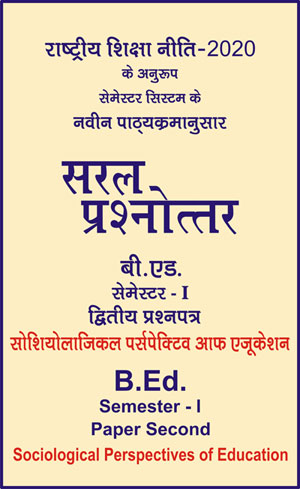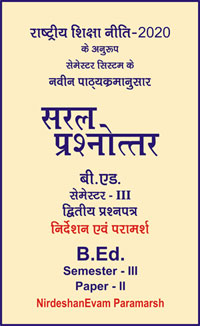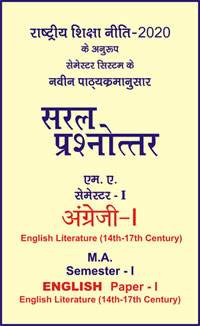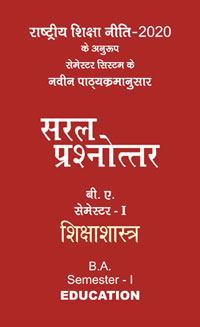|
बी एड - एम एड >> बी.एड. सेमेस्टर-1 प्रश्नपत्र-II - सोशियोलाजिकल पर्सपेक्टिव आफ एजूकेशन बी.एड. सेमेस्टर-1 प्रश्नपत्र-II - सोशियोलाजिकल पर्सपेक्टिव आफ एजूकेशनसरल प्रश्नोत्तर समूह
|
|
|||||||
बी.एड. सेमेस्टर-1 प्रश्नपत्र-II - सोशियोलाजिकल पर्सपेक्टिव आफ एजूकेशन (अंग्रेजी भाषा मे)
Question- What do you understand by “Equality of educational opportunities” ? How far it is available in India ?
Ans.
Equality refers to the uniformity and balance among entities. But we know no two men are exactly look alike in all respect and they are not even created equal because of a number of individual differences like gender, physical characters etc. Democratic equality is more to do with prescription than to description. Thus, it does not advocate distribution of nation wealth among classes but promotes ‘equality of opportunities’ among individuals. Indian being a democratic country is a strong follower of ‘equality of opportunities’ in all fields of community life. In education, too, ‘equality of opportunities’ is realized.
Equality of Opportunities in Education
It considered education as an equal birth right of every citizen and indicates that state should consider all citizens equal in distribution of educational opportunity. It also implies that equal opportunities should be provided to citizens without making any distinctions on the behalf of their physical, economic or other such grounds. According to Kothari Commission, “An important social aim of education is to ensure equality of educational opportunities so that underdeveloped peoples may utilize education as a means to improve their condition.” Hence, the equality of opportunities in education is a democratic value practically applied in the distribution of educational resources among the citizens of nation. It ensures optimum development of every individual according to his/her talent, ability and attitude.
Availability in India :
India being a democratic country bound to realize equality of opportunities in education at least ideologically. In practice, equality of opportunities in education is not observed line to line due to two reasons first, India is a welfare state and secondly, multifarious cultural nature. As a welfare state India protects a number of deprived sections of the country. Under special planes these sections are given extra opportunities to develop them upto a minimum level of development. Side by side they are provided protection against the age long atrocities of upper strata of society. These sections include women, SC, ST, OBC and minorities. Cultural diversity of India also hampered equality of opportunities in education. For example different linguistic and cultural groups are extra opportunities to open and organize their educational institutes.
|
|||||

 i
i 










